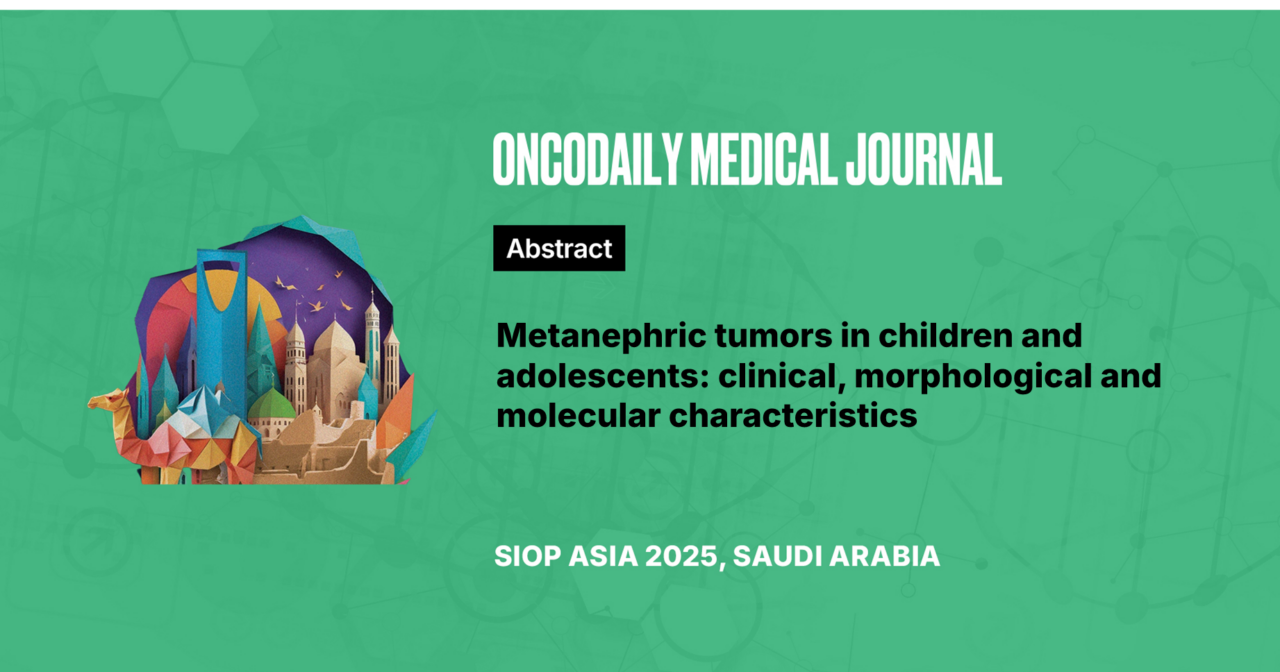Metanephric tumors in children and adolescents: clinical, morphological and molecular characteristics
Abstract
Introduction: Metanephric tumors (MT) are a group of rare childhood renal tumors, consisting of metanephric adenoma (MA), metanephric adenofibroma (MAF) and metanephric stromal tumor (MST). The aim of the study was retrospective analysis of characteristics of MT verified in the Department of Pathology in Dmitry Rogachev NMRC PHOI.
Methodology: 26 patients aged 0-18 years with a confirmed diagnosis of MA, MAF and MST for the period 02.2015-02.2024 (109 months) were registered. 16 patients with known clinical data were included in the final analysis, which was carried out on 01.02.2024.
Results: The median age was 3.5 years (range 0.4-15.2). The male/female ratio – 1:1. The median tumor volume (n=15) was 25 cm3 (range 5.0-587 cm3). The primary symptoms: abdominal mass – 1 (6%), polycythemia – 1 (6%), constitutional symptoms – 1 (6%), macrohematuria – 2 (13%), abdominal pain – 3 (19%), accidental findings – 8 (50%). Distribution by histological types: MA – 10 (63%), MST – 3 (19%), MAF – 1 (6%), MA in combination with papillary renal cell carcinoma (RCC) – 1 (6%), MAF in combination with papillary RCC – 1 (6%). BRAF V600E mutation was detected in 11/16 (69%). Preoperative chemotherapy per SIOP protocols was performed in 10 (63%). The surgery consisted in nephrectomy (n=9) and nephron-sparing surgery (n=7). The extent of surgery: R0 – 15 (94%), R1 – 1 (6%). The median follow–up was 16,4 months (range 0.6– 58.9). All 16 patients were alive without event.
Conclusion: Metanephric tumors are represented by various histological types, including composite tumors. Detection of BRAF mutation may support verification of diagnosis in ambiguous diagnostic cases.





